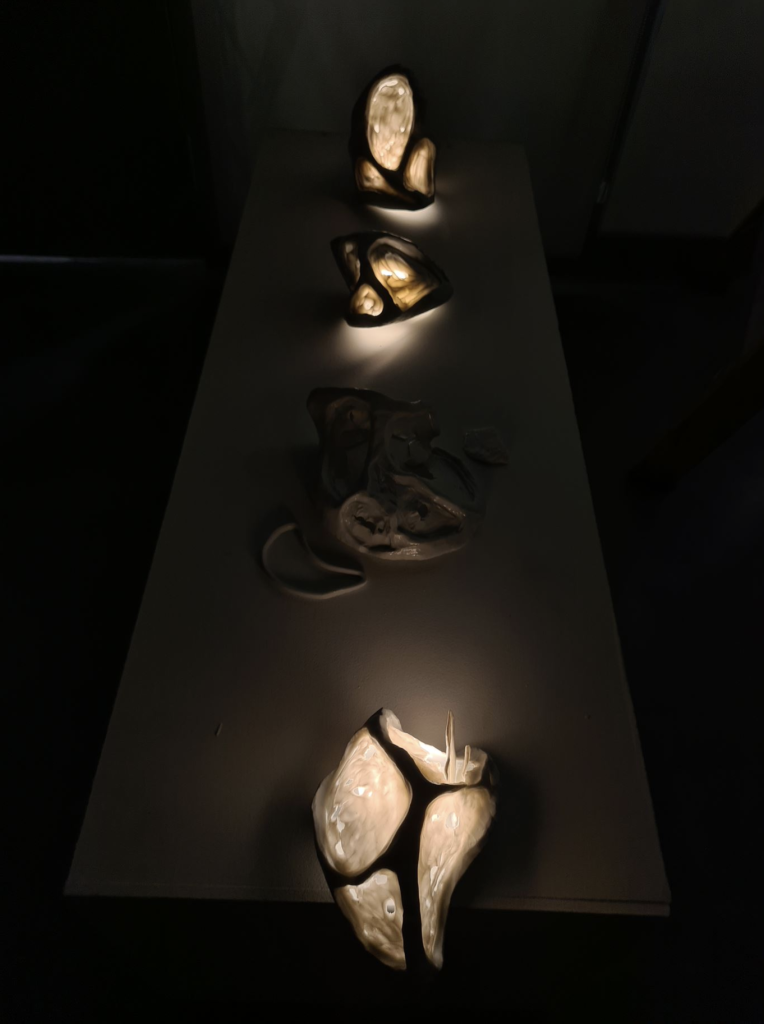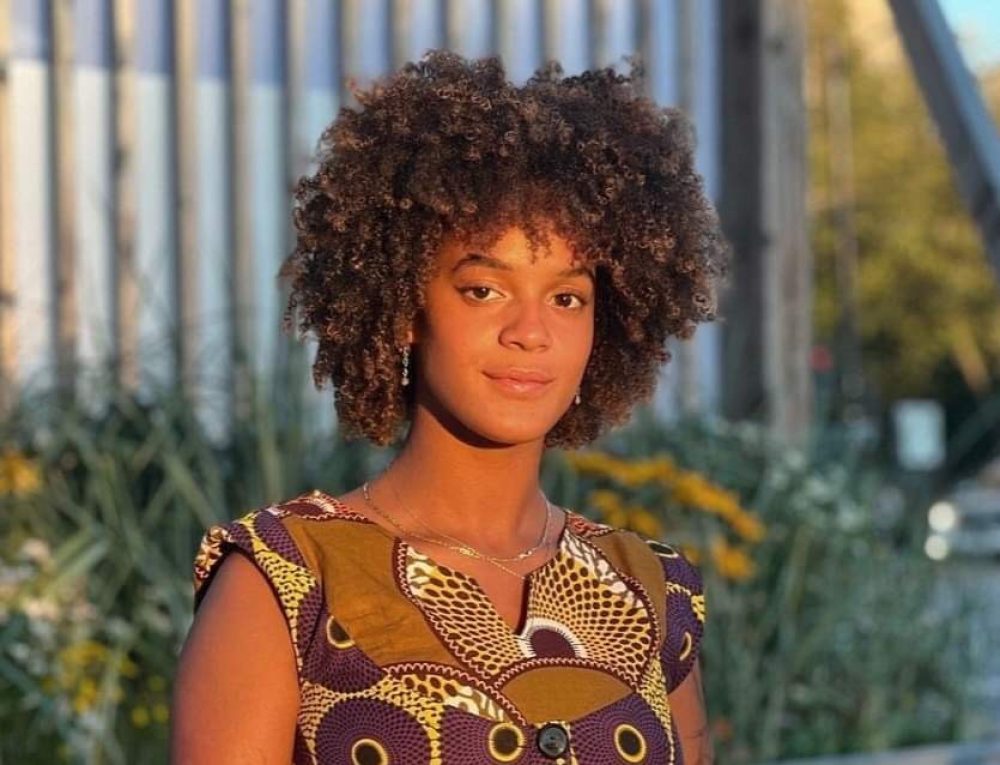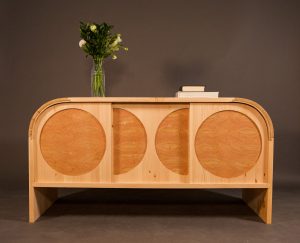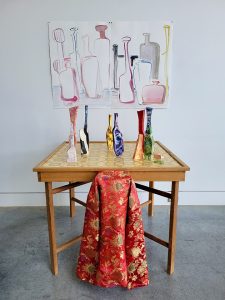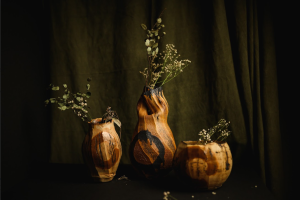Untitled
Hannah Watkins
ECU Award Recipient
ECU Graduation Awards for Anti-Racism and Social Justice – Visual Arts – Winner
Thick Rooted
Cone 10 ceramics, Galvanized steel, Mixed media
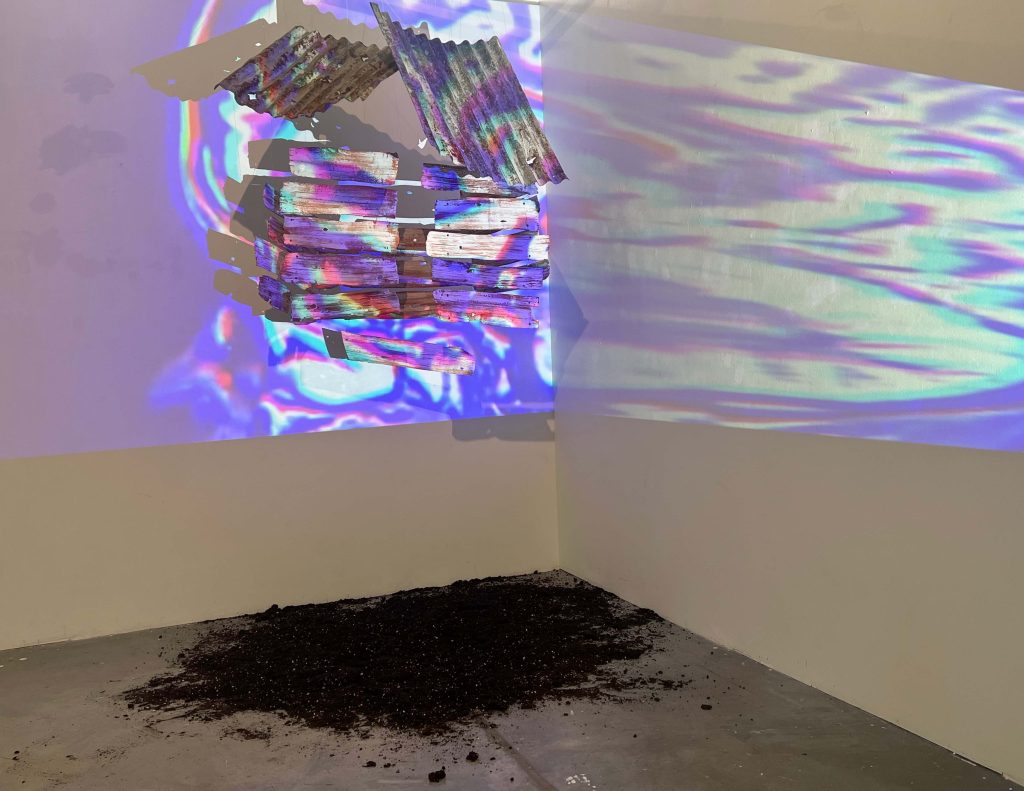
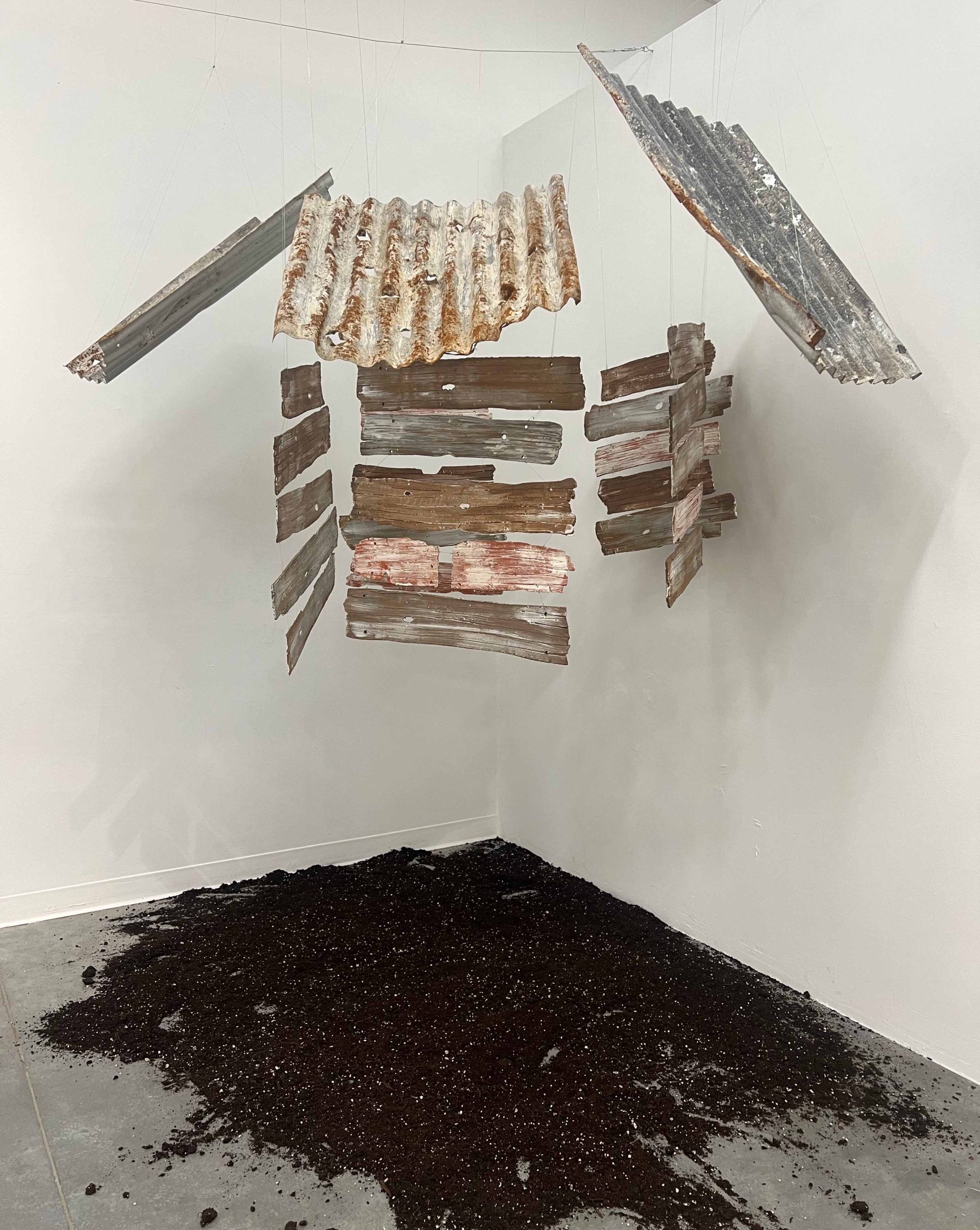
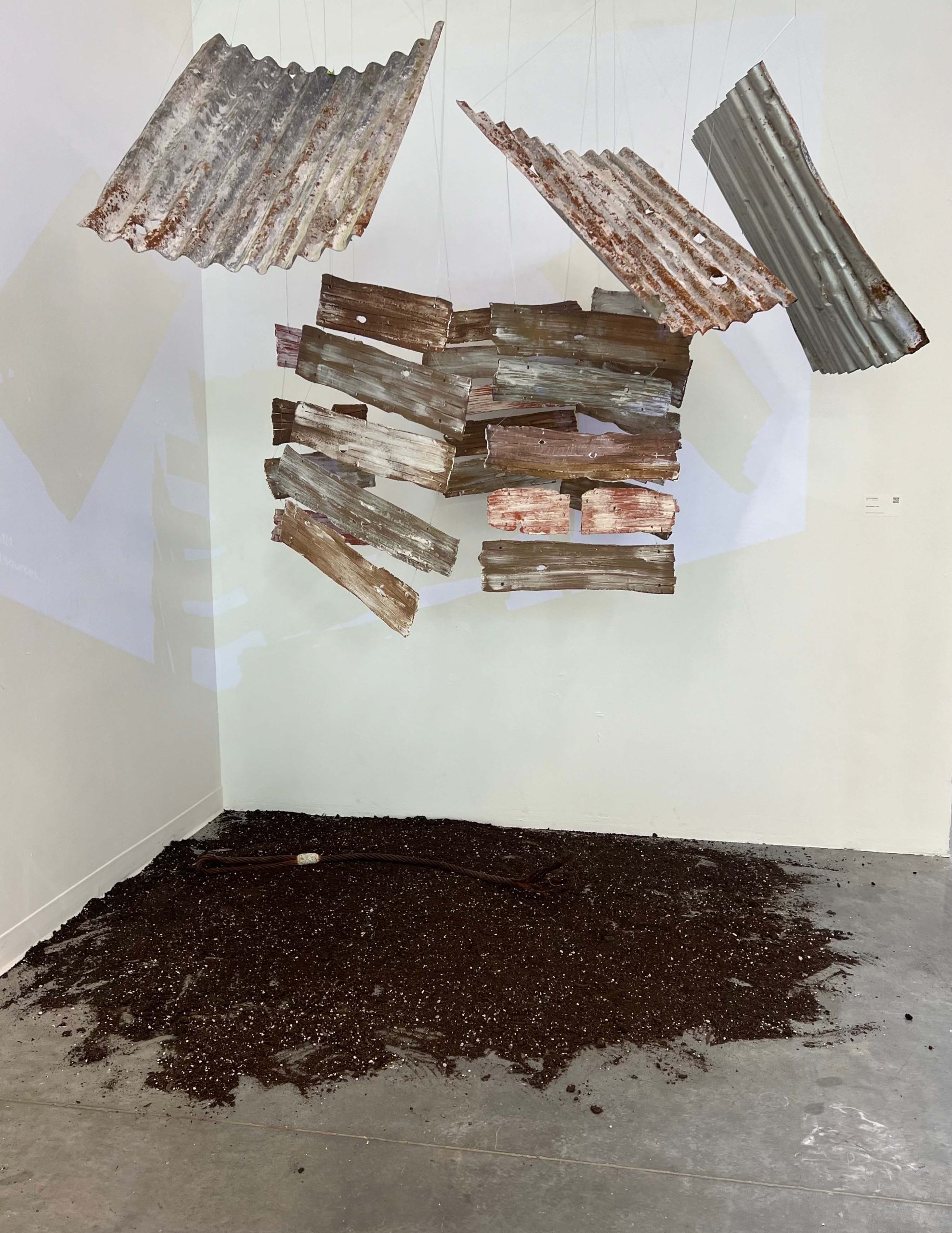
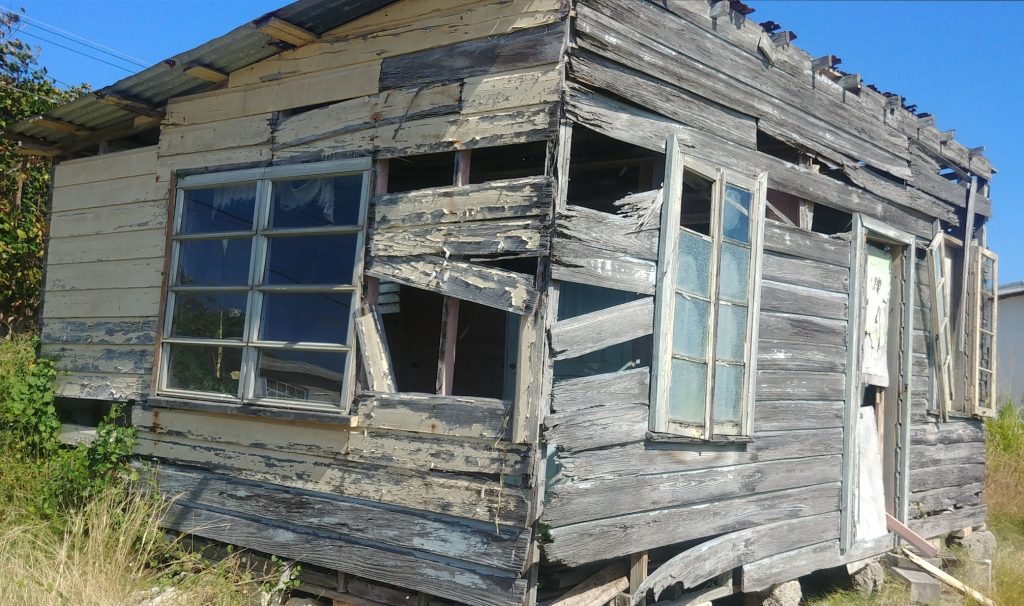
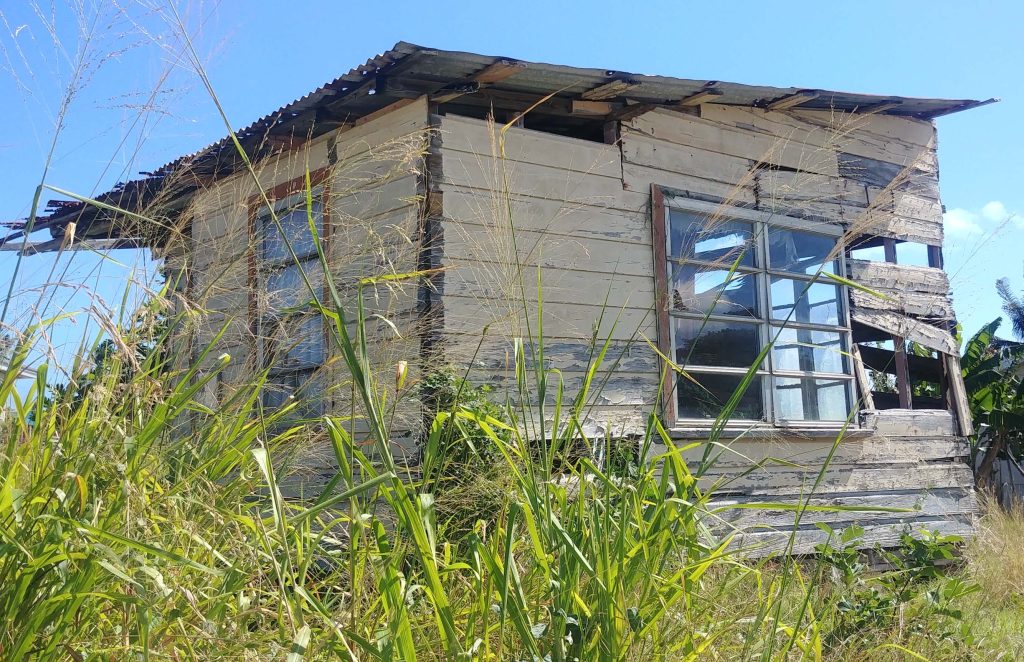
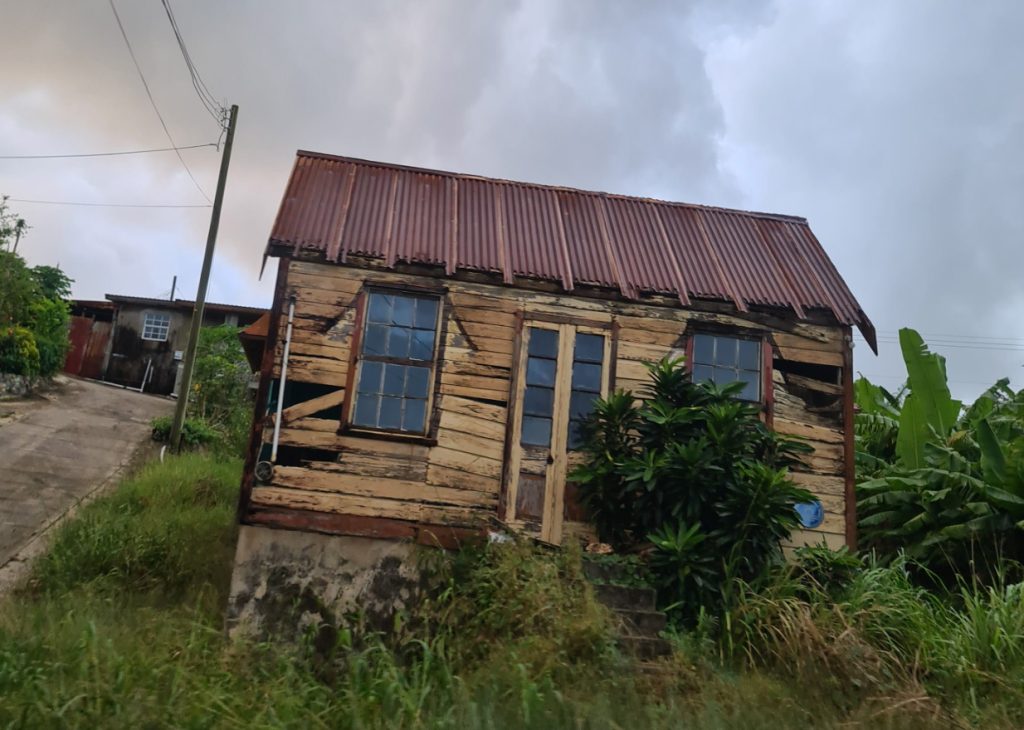
After emancipation, the people of Barbados were allowed to own their first home, so the chattel house was built. A small wooden house that was easy to construct, take down and relocate was a freedom that wasn’t felt before, although the homeowner never owned the land. Hence, a detachment of ownership still separates the two experiences. This body of work is inspired and a tribute to the history of Barbados, my birthplace. As the freed people were allowed to own their own homes for the first time that was a chance of rebirth after Emancipation. The Chattel house is a reminder of how far my family came and how strong of a people we are.
Delicate hand-made slabs of Cone 10, Ceramic replicated to resemble wood with galvanized sheet metal, through a deconstructed perspective. The fragility of the ceramics hangs above the scattered dirt, though the history of the detachment of the land and the Chattle house, The history of the detachment of the land and the Chattel House discusses what it means to be truly “free” under a colonized mindset. The main body comprises of several ceramic bisque slabs of H490 clay body, the slabs are individually hand-built and carved to resemble the weathered wood, and some appear in different shades to showcase a tradition of fixing your house for the new year which is referred to as Old-Years-Night, this is deemed as a good omen and prospect for change. As a viewer, you get the privilege of experiencing the dirt and chattel house although, still observing and standing on the stolen First Nations’ Unceded Territories lands. Recognizing the history of the Chattel House by shedding light on the steps it took for me to make a body of work in a positive light through the eyes of resilience
–
34
Cone 6 Pitfired Ceramics
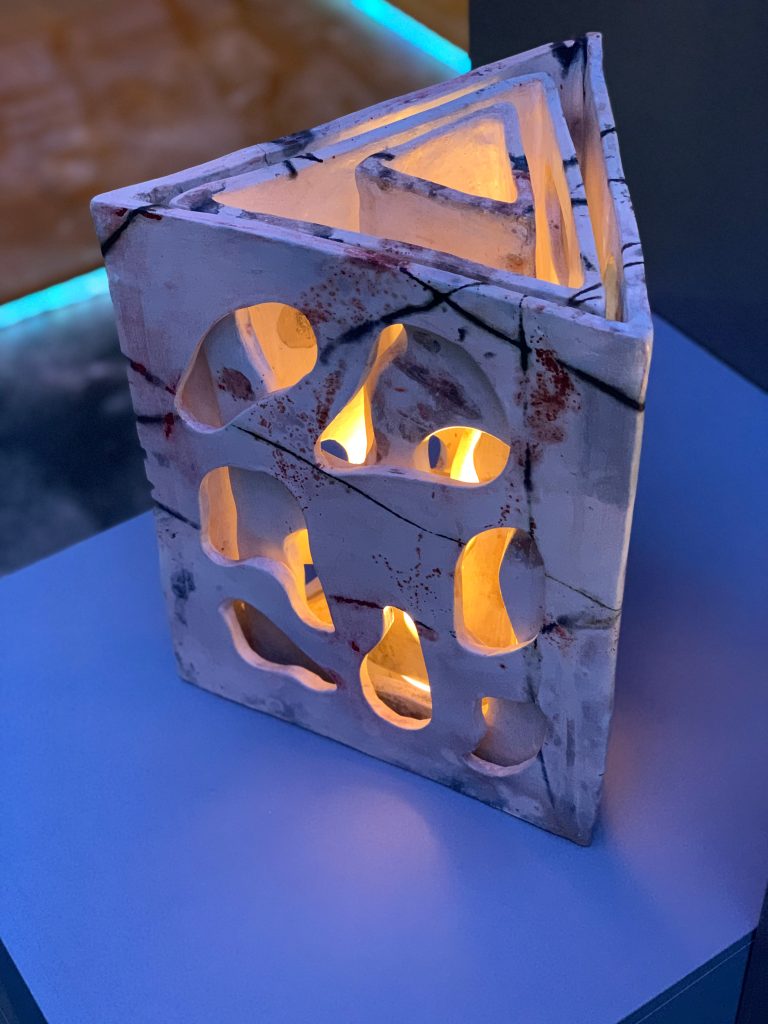
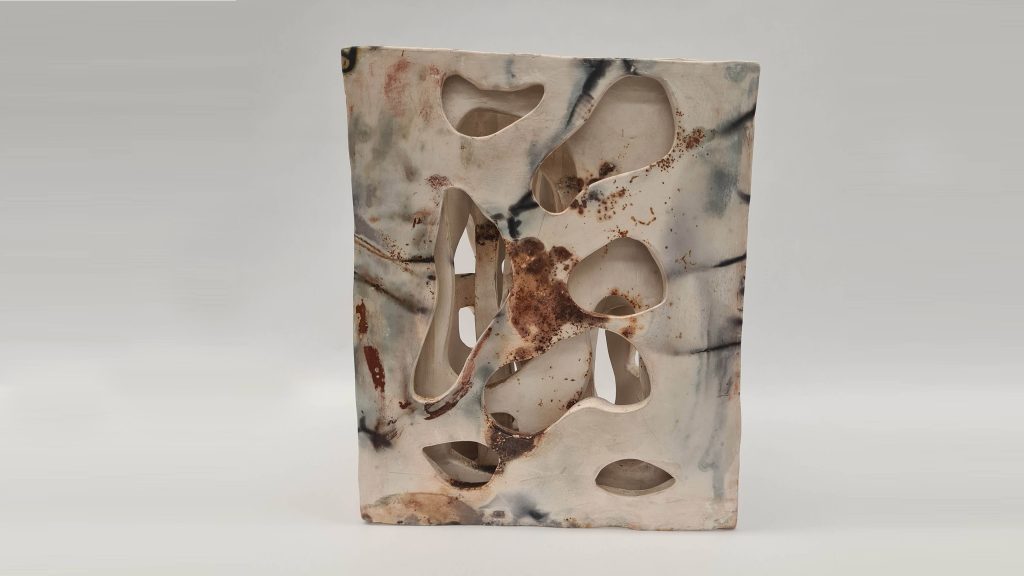
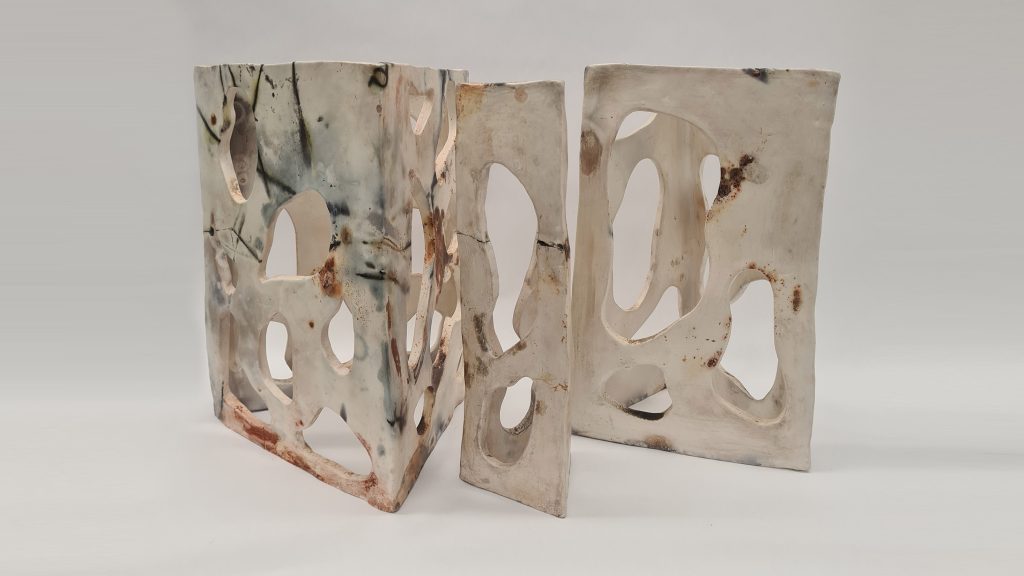
Only a few months after my diagnosis at 22 years old. The title of this work “34” is a representation of the number of holes in the ceramics that correlates to the marks left by my condition. 30 lesions in my brain, which I have made the outer walls, and the remaining 4 are in my spinal cord, located at the center of my work when separated. I incorporated many elements to be burned with the piece, including cutting pieces of my own hair. The therapeutic experience allowed me to release all the fears that had been burdening me. letting my ceramics experience the discomfort and numbness of a scorching hot fire for several days yet reveal an intact and elegantly scarred body.
–
One Last Vessel
Mixed media – Latex, Polar Ice Porcelain, silkscreen, found metals

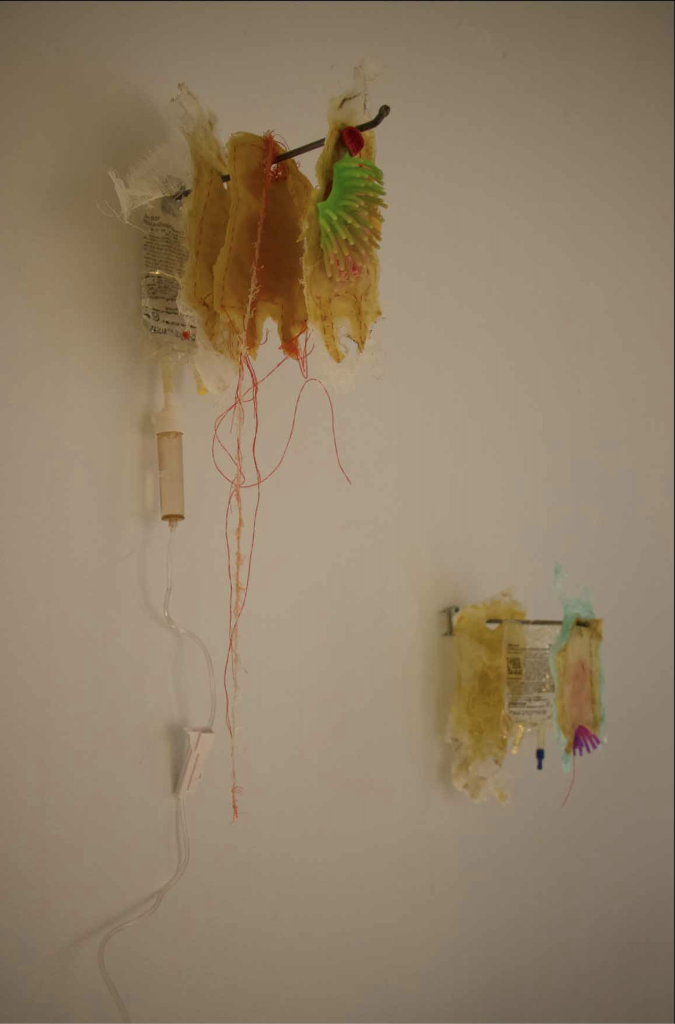
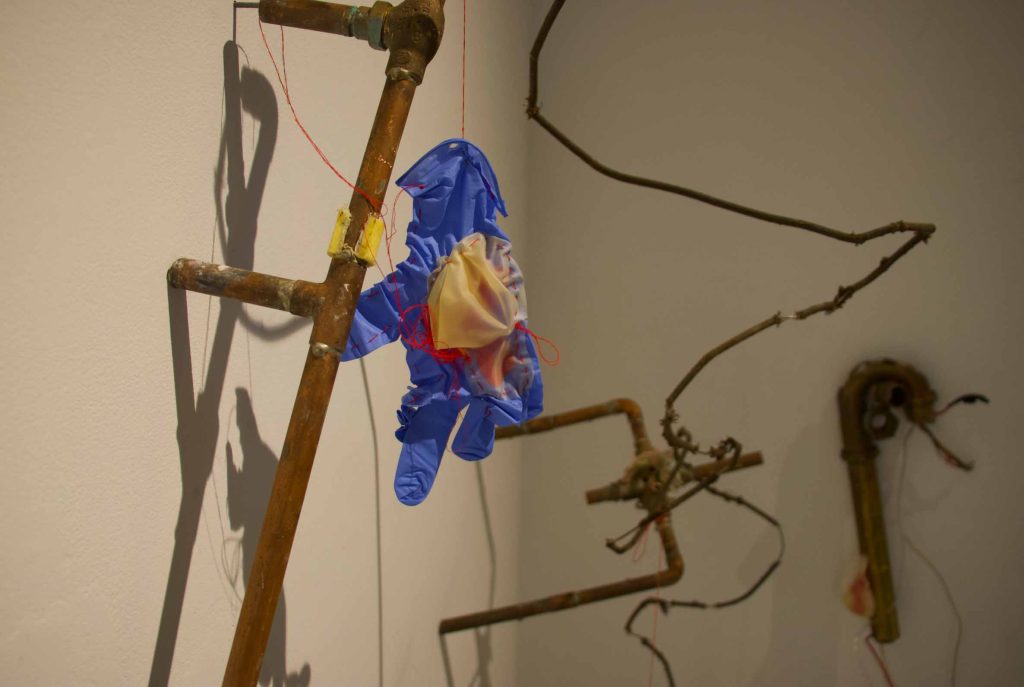
The concept for the project is a continuance of the previous work that surrounds the awareness of multiple sclerosis. (One Last Vessel) is a multi-medium sculpture, the concept behind this work explores the many different materials resembling the Human body. The installation consists of different variations of latex and Porcelain IV bags created from a silicone mould of my first infusion treatment IV bag that was kept, the other element to resemble the body is a collection of found rusted pipes and cabling alongside real IV tubbing as well as a hospital gown that is hand printed and sewed into. This work intends to represent the future that is my reality until a cure has been found. Until then 4 hours twice a year drip by drip allows me to continue to create and walk today and so forth.
–
Treatable but not curable
Cone 6 Ceramics, Wire
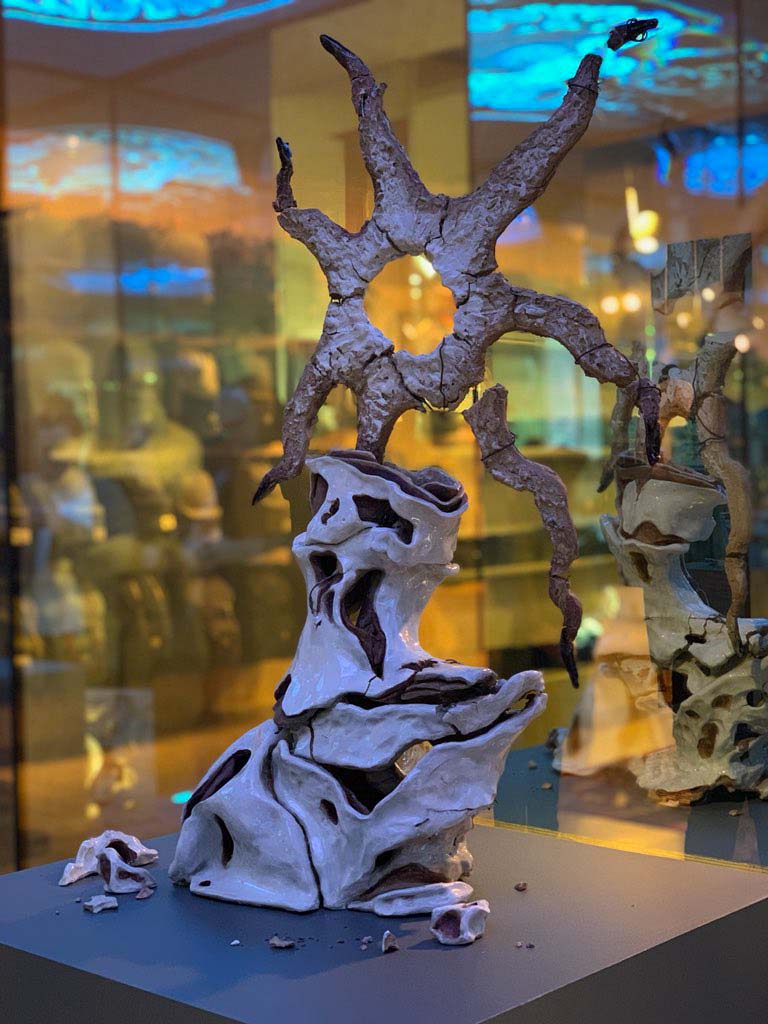
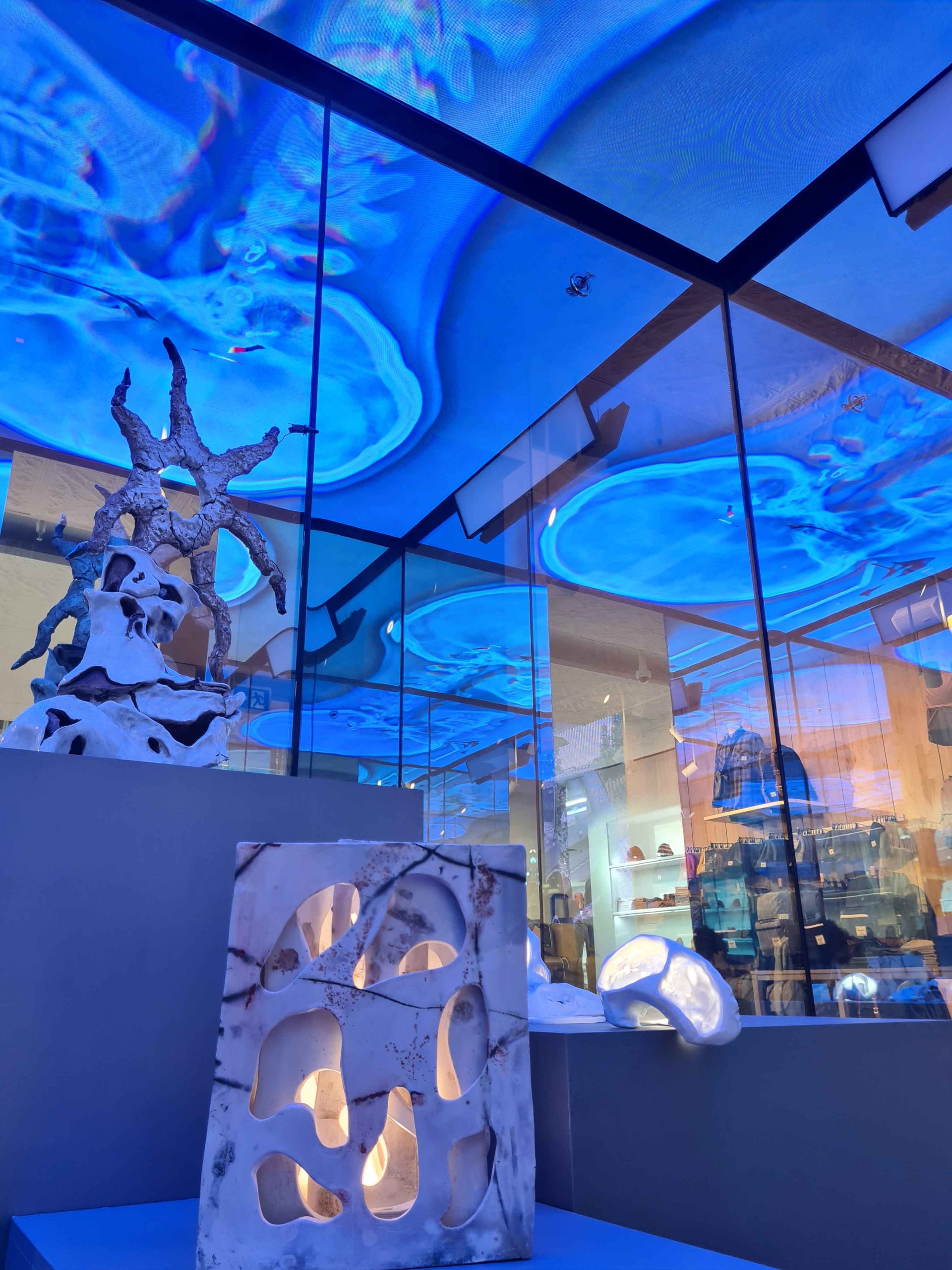
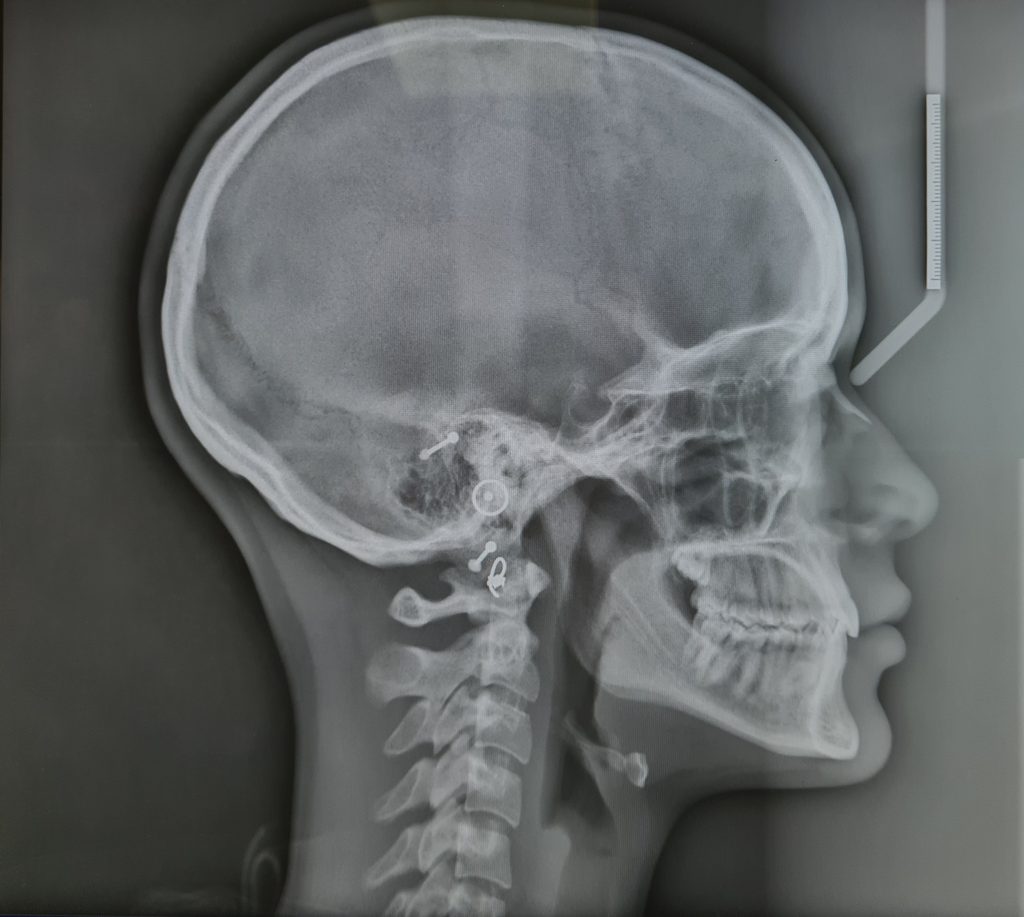
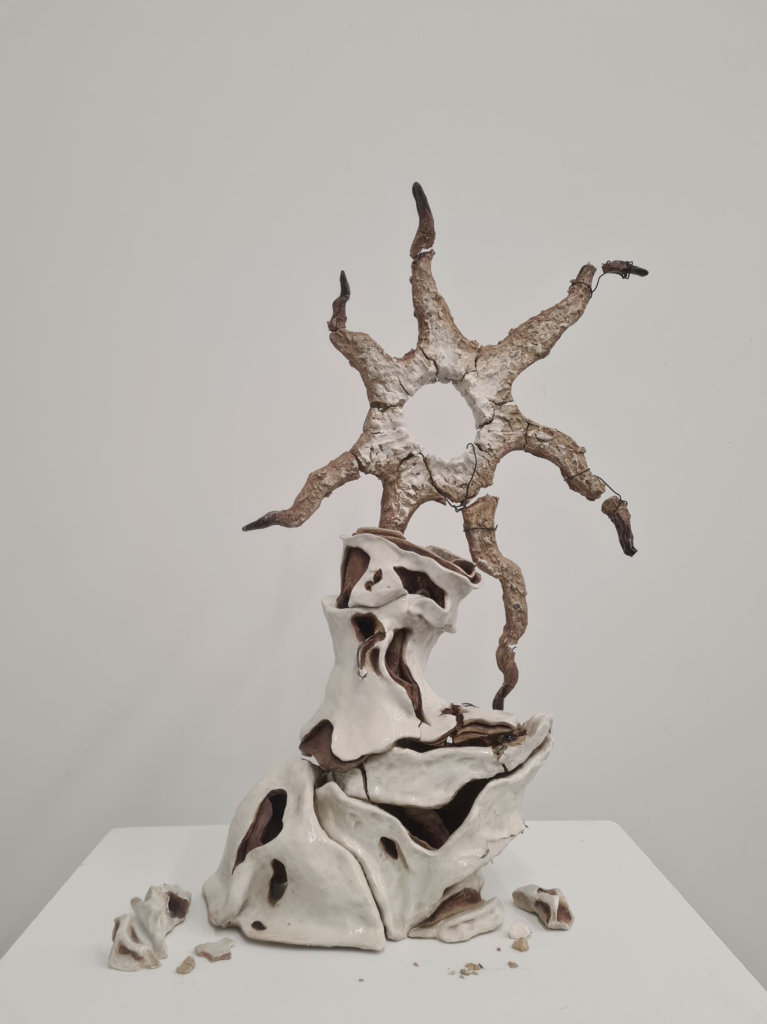
Treatable but not curable is my interpretation of a deconstructed myelin sheath that depicts the devastation of what multiple sclerosis does to the nervous system. The broken pieces that remain surrounding the head of the myelin Sheath are healed by wire, which is paradoxical to the objects that are forbidden in the MRI scans that I now need to take yearly.
–
Morning Routine
Cone 6 Ceramics, Mixed media

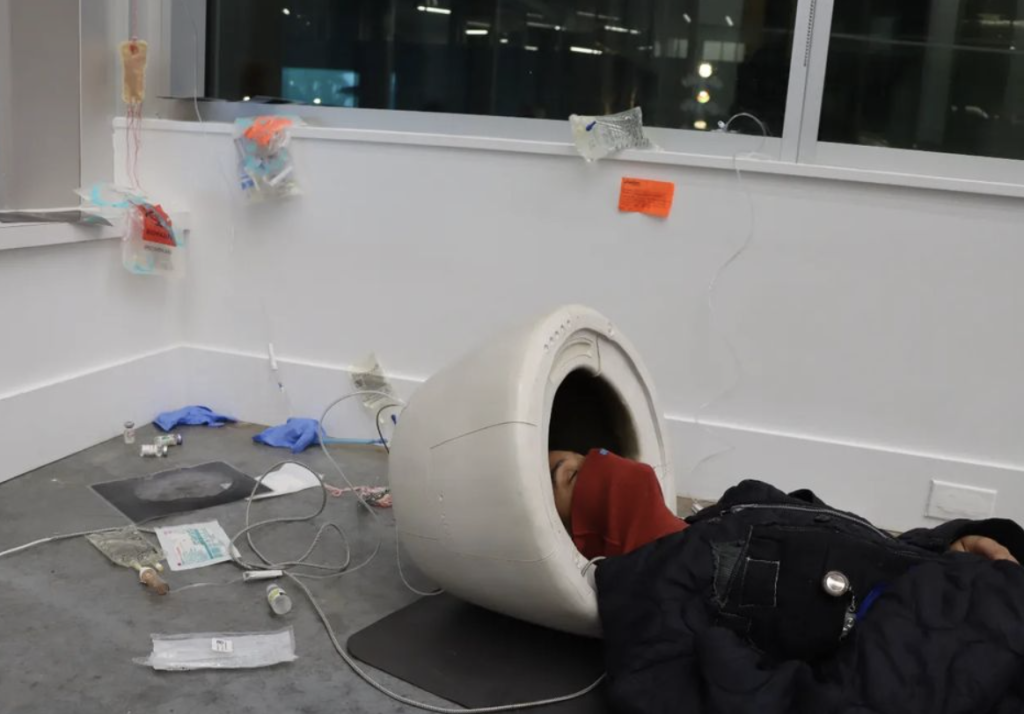
Twice a year the sound of blaring mechanical noises is the sound that has become my internal monologue over the years for the mornings of my checkups. This body of work is an MRI simulator made out of a Cone 6 clay body, the sensation of a claustrophobic device as you are asked to lay down and hear what sounds like a construction site is an experience my routine, although for mine I am made to lay completely still for an hour as I am scanned for more possible lesions.
–
Untitled
Cone 6 Ceramics, Flocking
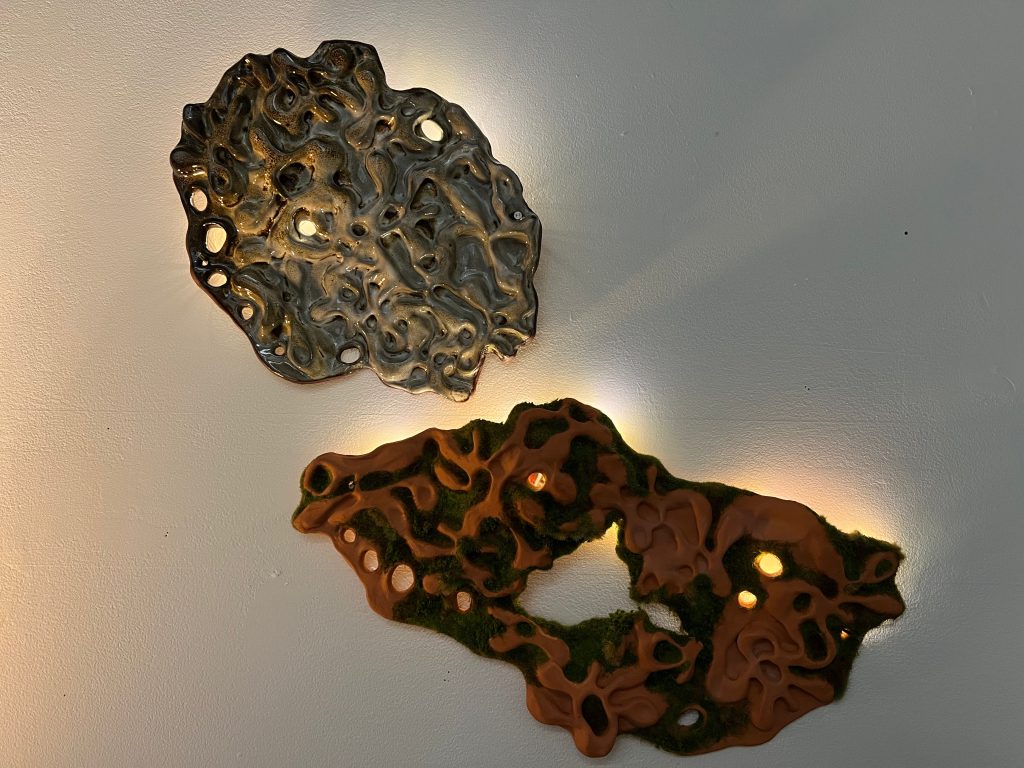
The two forms are an architectural install through the help of an illustrator-made 3D printed extruder die piece that I made through abstracted forms. Twenty individual pieces attached to cone 6 clay slabs, all hand-altered. Without intention, the glazed work begins to take on a medical viewpoint when observed with my other installation yet there is no direct intention for it to relate. The piece works as a wall mount that cascades light throughout the holes. This work intends to transform a room through touch and shadows.
–
Untitled
Cone 10, Polar Ice porcelain.

